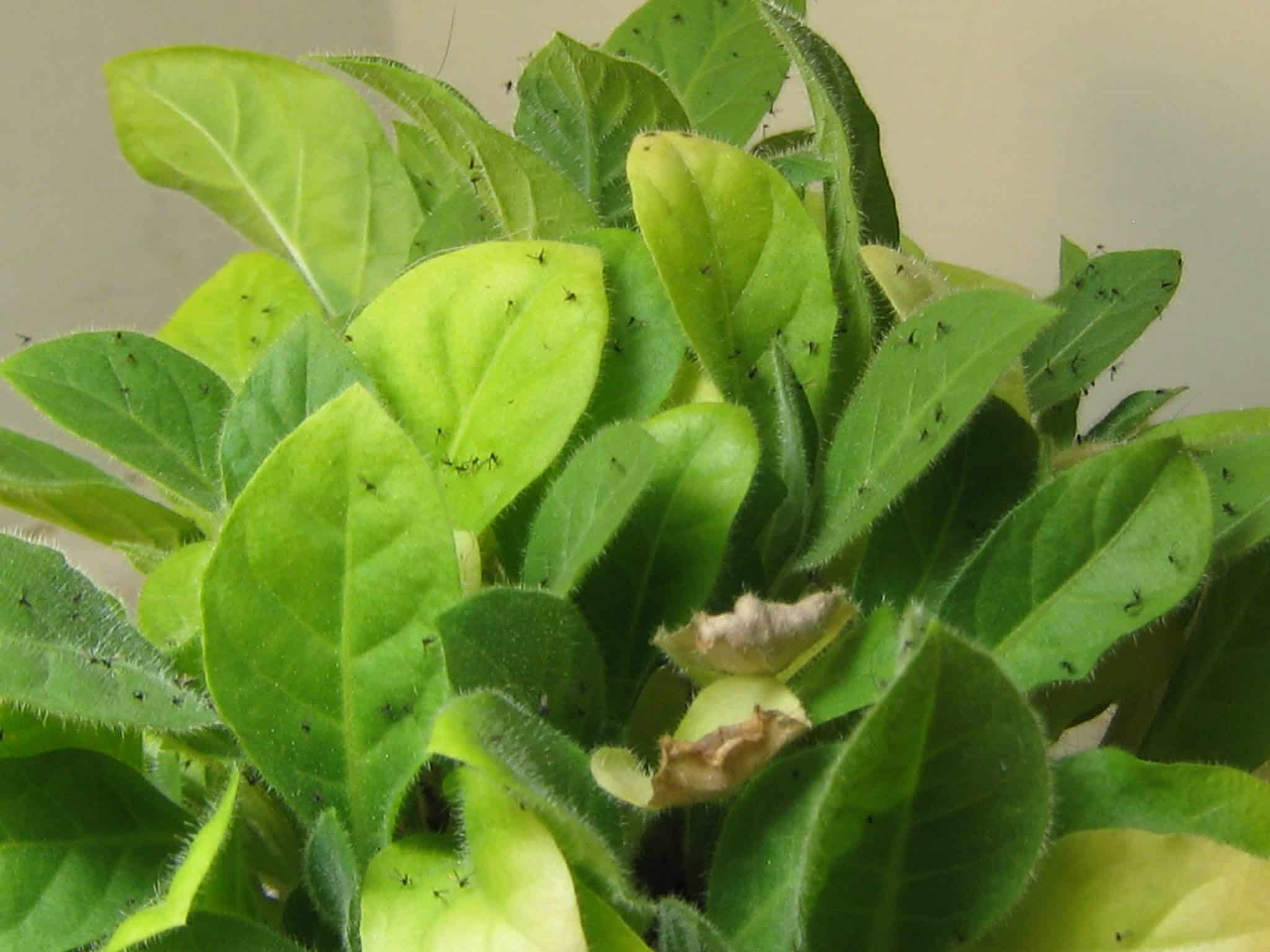
Whenever you are using organically rich soil for potting or repotting, in most cases just a few days later you will see myriads of small flies crawling in your pots and flying around. Those are fungus gnuts and are very easy way to avoid.
I often get this question from people watching my videos: why do you have sand in your pots, do you grow in sand? The answer is NO. I don’t grow in it, but I like adding a 2-3cm (1 in) layer of sand box sand on top of my pots. The main reason – you will not get those flies!
To get to know the subject the flies in your pots are fungus gnats. It can be different species with Latin name Bradysia in Sciaridae family. Many people think they are fruit flies (Drosophilidae family), but they are not the same. Fungus gnats lay their eggs and hatch in soil.
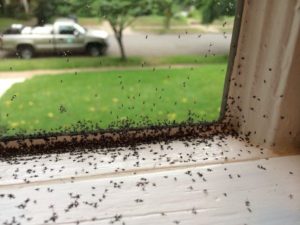 The adult fungus gnats are not much more than an annoyance. Attracted to the CO2 (carbon dioxide), which we breath out, they will fly toward you every time you want to check on your plants. In rare cases the infestation can get as bad as on the photo to the right.
The adult fungus gnats are not much more than an annoyance. Attracted to the CO2 (carbon dioxide), which we breath out, they will fly toward you every time you want to check on your plants. In rare cases the infestation can get as bad as on the photo to the right.
Fungus gnats larvae, however, can do some damage as they are feeding on organic matter in the soil, but also on root hairs of your plants. They can even tunnel into cuttings’ base. So, just sand them over :)
In some extension the sand layer can even prevent other pests also hatching in soil. The sand layer is even a good indicator for watering. Most plants have to be watered when the upper soil getting slightly dry (like most of my tropical plants). Just by touching the sand you can easily tell when it’s dry and it’s time to water.
In addition, the sand layer gives a good support for cuttings and it simply looks better (if you ask me) in pots comparing to soil. I mean sand, beaches and tropics have some persistent connections in our brains.



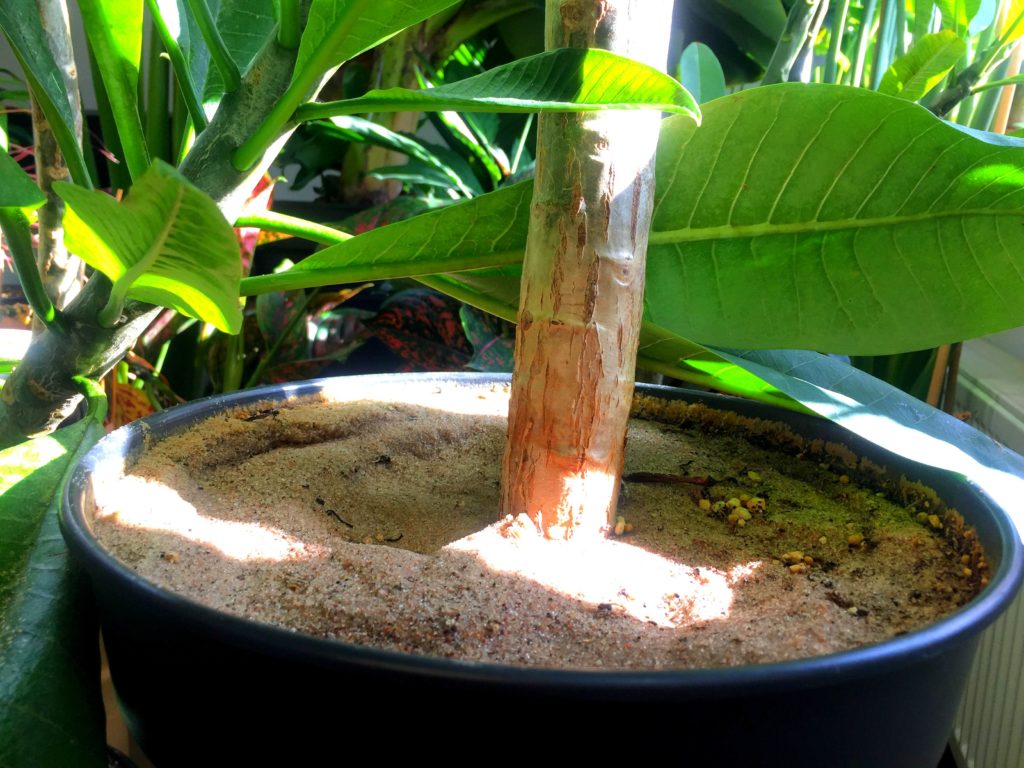



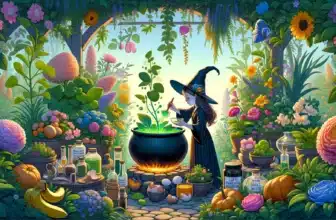
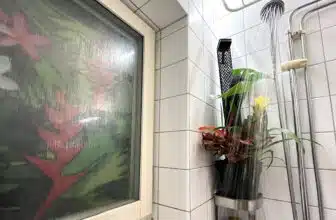
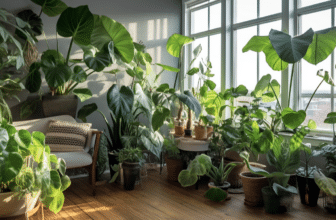
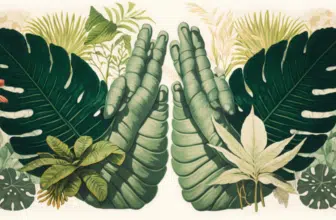

Dear Alex, I had a big issue with fungus gnats. I thought to help myself with the sand-method. But then I worried that I could not water the plants from above any longer, as the fine sand would every time wash down into the soil. So I went to the garden-center and got myself a chemical, very expensive (!), 10 Euros for only 6 liters of water. (Lizetan from Bayer) I bought 10 pieces of it and drowned all my 50 flower-pots in that liquid. With immediate effect. Now there are only a few fungus gnats left. Every time I water my plants I use this poisonous liquid on them – until this pest is over once and for all. When I use new soil, first I put it in the microwave and kill every living bacteria or cell in there, before I apply it on the plants. This seems to me actually a good method to keep the soil free of unwanted living beeings. :-) Prevention is everything! :-) How do you manage the watering of your plants with the sand on top?
The sand makes it easier for water to get thru. Perfect for cactus plants.
I have been dealing with gnats for almost a year nothing seemed to work until I got the yellow tape. The gnats are attracted to the color yellow so they get stuck there and now there’s no adults to lay eggs!! 15 days and I don’t see many gnats flying around. But I do see more more glued to the tape.
Hi Katharina,
I understand your concern and I had the same thoughts before I tried it. I’ve been doing it now for many years and I can say that even the very fine sand stays on top and and doesn’t wash down. It’s true even in large pots with the most well drained substrate, which I use for Heliconia. It’s mostly medium sized pieces of bark with some peat moss. Even there the sand is staying on top. And as I wrote above, it’s a good indicator for watering time too.
As for chemicals, I try to avoid using it as far as possible.
Great post! Would you mind if we featured this post on our website (www.rootbridges.com)? We grow a wide variety of tropical plants and I’m sure our community of plant parents would appreciate the information here. We’ll credit you for it.
Thank you! You are very welcome to share it with a link back.